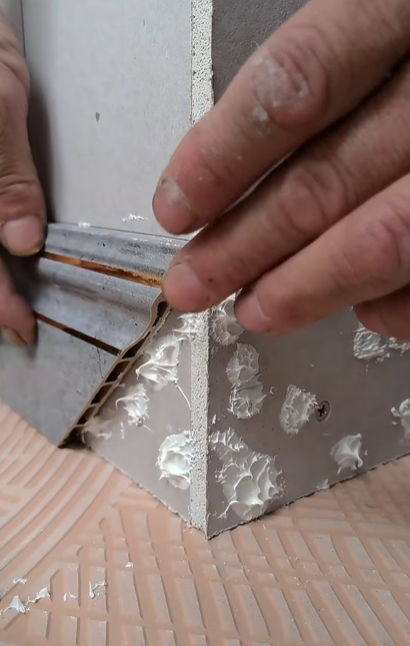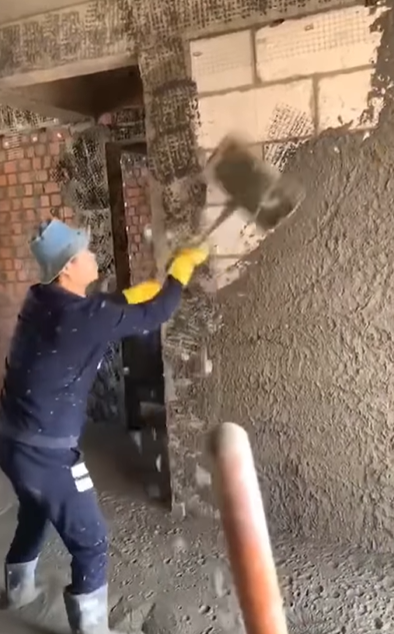
Creating a durable and natural-looking concrete railing involves skill, vision, and hands-on craftsmanship.
The following sequence documents the entire process—from framework to final finish—resulting in a structure that blends beautifully with the surrounding environment.
Building the Reinforcement Framework
The process begins with installing the rebar skeleton—the hidden strength behind the concrete railing.
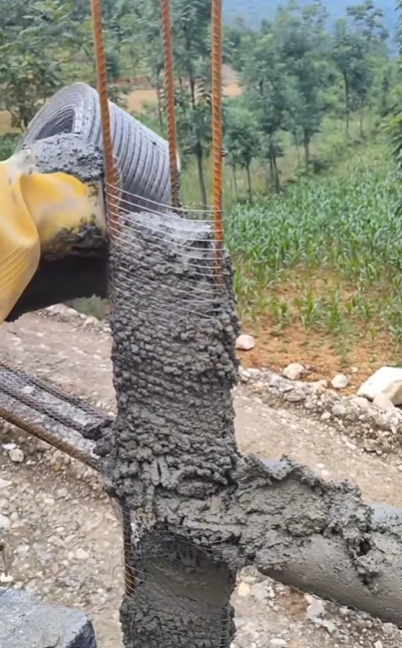
Steel rods are carefully shaped and positioned, with wire mesh wrapped around the vertical and horizontal bars to provide support for the cement to cling to.
Hand-Applying the First Layers of Cement
In the second phase, a skilled worker begins applying the first coat of cement directly onto the metal framework.
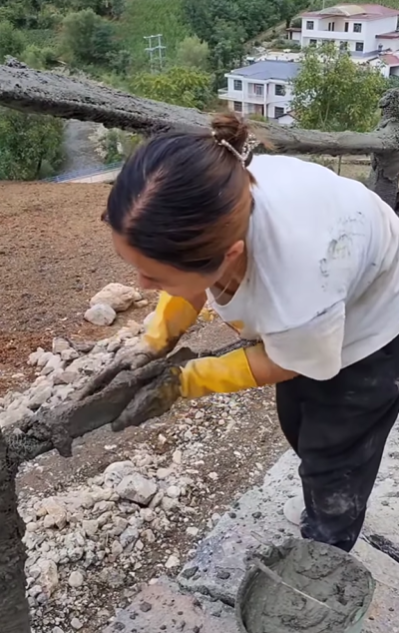
Using gloved hands, they ensure full coverage over the mesh and rebar, slowly forming the initial shape of the railing.
Shaping the Railing to Resemble Tree Trunks
Once the structure is stable, workers start sculpting the surface into a rounded, natural form.
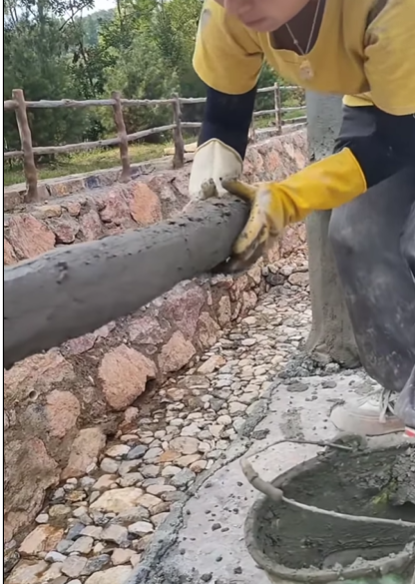
Attention is paid to thickness and curvature, with the design mimicking the appearance of wooden logs or branches—a popular style for nature trails or garden paths.
Smoothing and Detailing for a Realistic Look
After the rough shaping, tools are used to smooth and refine the surface.
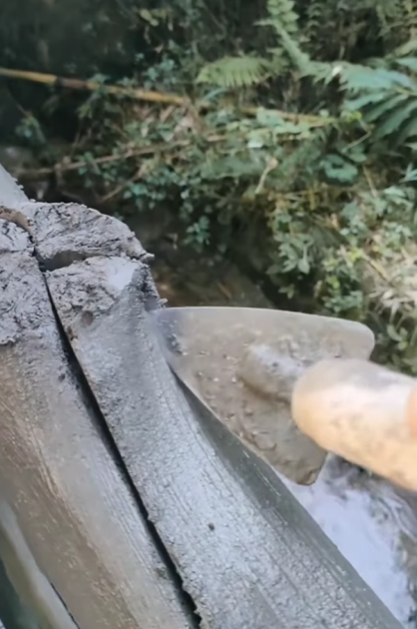
Subtle lines and curves are carved in to replicate the look of bark and wood texture, giving the concrete railing a life-like wooden finish.
The Final Product — Strong, Natural, and Beautiful
The result is stunning—a solid, weather-resistant concrete railing that visually resembles carved wood.
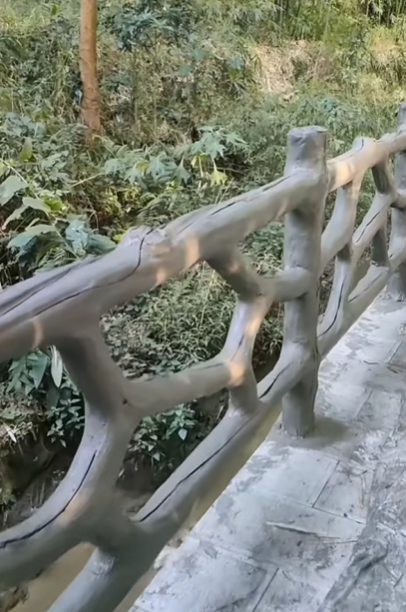
Nestled in a lush natural setting, it provides both safety and aesthetic harmony, blending engineering with environmental artistry.
This process showcases how creativity and construction come together to produce functional art.
With careful hands and vision, a pile of cement and steel transforms into something that feels alive, timeless, and perfectly in place with its surroundings.


